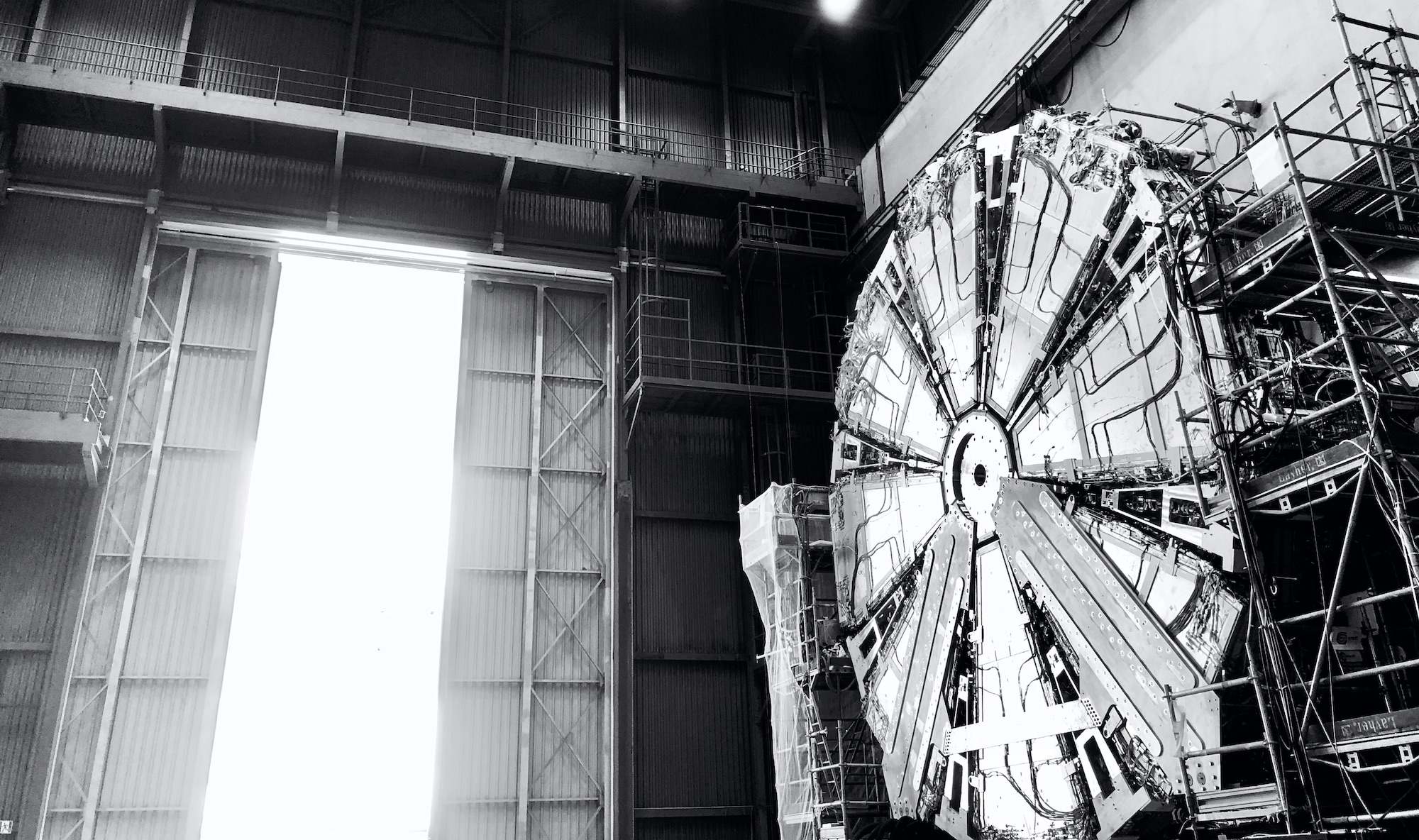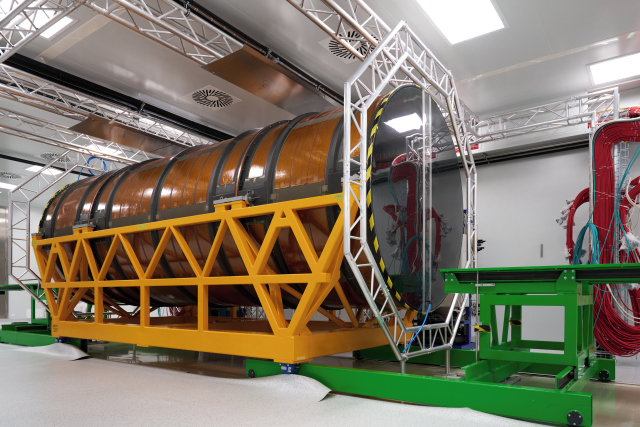First ATLAS New Small Wheel nears completion
4 June 2021 | By
On Friday 28 May 2021, teams of physicists and engineers installed the final "wedge" of the first ATLAS New Small Wheel detector. This was an important milestone for the Collaboration, in preparation for the wheel’s installation in the ATLAS cavern later this summer.
These now-iconic detectors are critical to a new era of exploration for the ATLAS experiment. In the coming years, a major upgrade to the LHC – known as the High-Luminosity LHC – aims to crank up the collider's luminosity by a factor of ten beyond its design value. This will generate even more collisions, allowing ATLAS physicists to probe phenomena that are even rarer in nature.
A massive upgrade of the ATLAS experiment is underway to prepare for this increased luminosity. The first major system to be upgraded is the muon spectrometer, with the New Small Wheels set to be installed on either end of the experiment in summer and autumn 2021. The wheels use novel small-strip Thin Gap Chambers (sTGC) and Micromegas detectors. These new technologies will give ATLAS much more stringent selection criteria for muons, and better handle high background and pile-up rates – the two main requirements for the High-Luminosity LHC.
The New Small Wheels were built in ATLAS institutes around the world and mounted on the wheels at CERN over the course of several years. Following the installation of the last "wedge" of detectors, the first New Small Wheel is now complete, with just final testing and commissioning pending.
The photos below showcase the logistical complexity behind this milestone. Look forward to watching the installation of this “small” behemoth, set to be broadcast live on CERN and ATLAS channels this summer.











